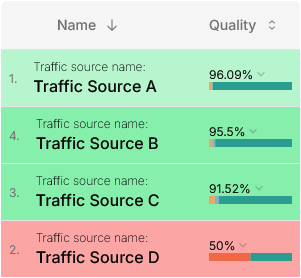The Difference Between Direct Advertisers & Ad Networks
Ever wondered how ads show up everywhere online? Two main players make it happen: Direct Advertisers and Ad Networks. They both help businesses promote their products, but they work in different ways. Let’s break it down!

What is a Direct Advertiser?
A Direct Advertiser is a company that promotes its own products or services by working directly with websites. Instead of using a middleman, they reach out to website owners and arrange deals themselves.
For example, imagine Nike wants to advertise its newest sneakers. Instead of relying on a third party, Nike contacts a popular sports website and pays them directly to display Nike ads. This way, Nike knows exactly where its ads will appear.
What is an Ad Network?
An Ad Network is like a matchmaker between advertisers and websites. It collects ads from many companies and then automatically places them on different websites. Instead of advertisers negotiating with website owners one by one, the network does all the work.
For instance, if Nike doesn’t want to manually contact hundreds of websites, it can use an ad network like Google Ads. The network will distribute Nike’s ads across multiple websites, ensuring they reach the right audience without Nike having to manage every placement.
Key Differences
The biggest difference is control vs. convenience. Direct advertisers have more control over where their ads appear, but they must spend time setting up deals with websites. Ad networks, on the other hand, offer a fast and automated way to reach many websites, but advertisers don’t always know exactly where their ads will be placed.
Direct advertising is often used by big brands that want specific placements, while ad networks are great for businesses that want broad exposure without the hassle of managing everything manually.
Traffic Quality Considerations
One of the key differences between direct advertisers and ad networks is traffic quality. Direct advertisers often have stricter quality requirements because they are spending their own budgets and expect high-intent traffic that leads to conversions. They may use whitelisting, direct deals, and strict fraud prevention measures to ensure they are getting real, engaged users.
On the other hand, ad networks aggregate traffic from multiple sources, which can lead to varying levels of quality. While premium ad networks enforce strong vetting processes, others may include low-quality placements, bot traffic, or even fraudulent clicks. Advertisers working with ad networks must rely on traffic analysis tools to detect anomalies, filter out bad traffic, and optimize performance.
Using a traffic quality analytics platform like Traffic Dynamix can help advertisers and networks identify invalid traffic, measure engagement, and optimize their media buying strategies to maximize return on ad spend (ROAS).
Which One is Better?
It depends on the goal. If a company wants full control over where its ads appear, direct advertising is the way to go. If it wants wide reach with minimal effort, an ad network is the better choice. Some companies even use both to get the best of both worlds!
Final Thought
No matter how an ad gets placed, the goal is always the same: to grab your attention! Next time you see an ad online, you’ll know exactly how it got there.
Happy browsing (and avoiding ads)! 😆